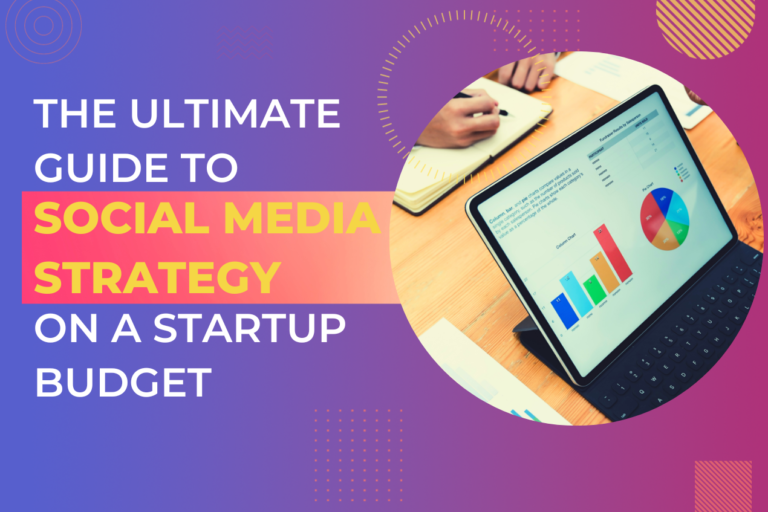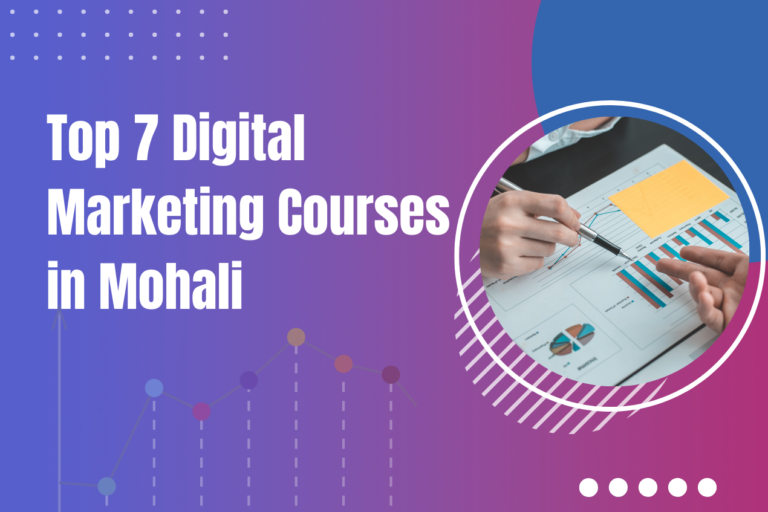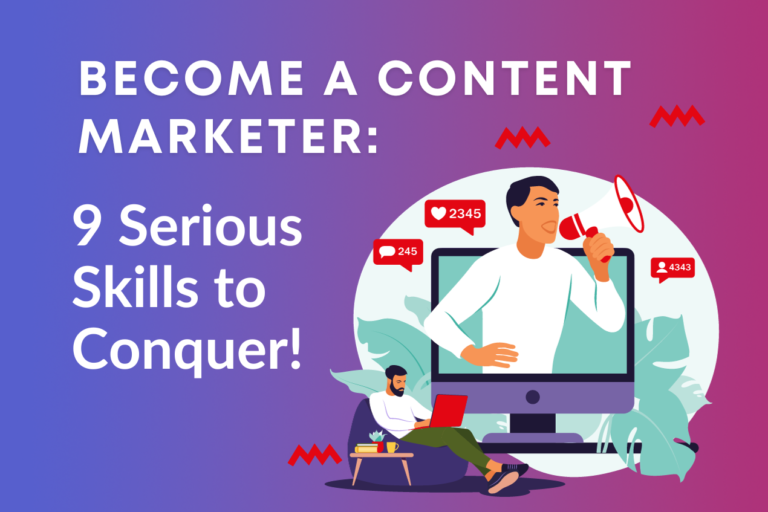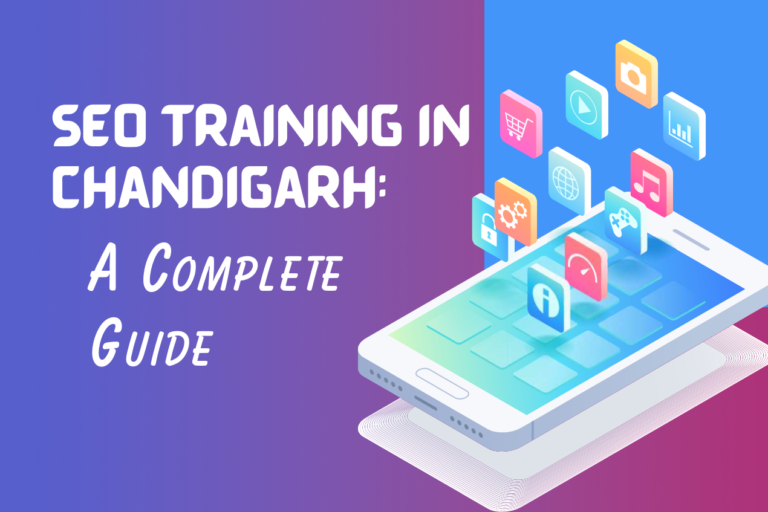In today’s digital age, harnessing the power of social media is imperative for startups looking to establish their online presence and connect with their target audience. However, many startups face the challenge of limited budgets for their marketing efforts. The good news is that with the right digital marketing training and a strategic approach, you can make the most of your resources and build a robust social media strategy that doesn’t break the bank. In this comprehensive guide, we will outline and delve into various aspects of creating an effective social media strategy for startups, even with limited financial resources.
Table of Contents
Setting Clear Goals
Setting clear and well-defined goals is the foundational step in crafting a successful social media strategy for startups on a limited budget. Your goals will serve as your guiding light, directing your efforts and ensuring that every action you take on social media aligns with your overarching business objectives.
In the realm of social media, vague goals like “getting more likes” or “increasing followers” won’t cut it. Startups must define specific, measurable, achievable, relevant, and time-bound (SMART) objectives. For instance, a SMART goal could be to “increase website traffic from social media channels by 20% in the next three months.” This goal is specific (website traffic), measurable (20% increase), achievable (within three months), relevant (drives business growth), and time-bound (three months).
Examples of Relevant Social Media Goals
To give you a better idea, here are some examples of relevant social media goals for startups:
- Brand Awareness: Increase brand awareness by reaching 10,000 people with your social media content each month.
- Lead Generation: Generate 200 new leads through social media sign-ups within the next quarter.
- Engagement: Achieve an average monthly engagement rate of 5% (likes, comments, shares) on your social media posts.
- Conversion: Drive 50 direct sales from social media in the next two months.
- Customer Support: Reduce response time to customer inquiries on social media to less than one hour.
Identifying Your Target Audience
The success of your social media strategy hinges on your ability to pinpoint and understand your target audience. These are the individuals or groups most likely to be interested in your products or services. In essence, your target audience is the heart of your social media strategy.
Understanding your audience goes beyond demographic data; it’s about comprehending their needs, pain points, preferences, and behaviors. When you intimately know your audience, you can tailor your content and messaging to resonate with them on a deeper level. This fosters engagement, trust, and loyalty.
Methods for Researching and Defining Your Target Demographic
To begin, research is your ally. Start by examining your existing customer base and gathering data on their characteristics. This could include age, gender, location, occupation, interests, and more. Social media analytics tools can provide valuable insights into the demographics of your current followers.
Additionally, surveys and feedback forms can help collect information directly from your audience. You can use platforms like Google Forms or SurveyMonkey to create and distribute surveys, asking questions that reveal audience preferences and pain points.
Creating Buyer Personas
One effective strategy for understanding your audience better is to create buyer personas. These are semi-fictional representations of your ideal customers based on real data and market research. Each persona includes demographic information, behaviors, goals, challenges, and even a name and a face.
By developing buyer personas, you create a clear image of who your audience is, allowing you to tailor your content and messaging to address their specific needs and desires. For example, if you’re a startup offering fitness products, you might create personas like “Active Annie,” representing fitness enthusiasts, and “Busy Brian,” representing those seeking convenient workout solutions. These personas guide your content strategy, ensuring that it speaks directly to the people who matter most to your business.
Choosing the Right Platforms
Not all social media platforms are created equal, and startups need to be strategic in their platform selection. It’s tempting to want a presence on every platform, but this approach can be overwhelming and ineffective, especially for those operating on a limited budget. To maximize your impact, it’s essential to select platforms that align with your target audience and business goals.
An Overview of Popular Social Media Platforms
Let’s take a brief look at some popular social media platforms and their key characteristics:
- Facebook: A versatile platform with a broad user base. It’s ideal for B2C businesses and offers robust advertising options.
- Instagram: Known for its visual content, Instagram is perfect for businesses with visually appealing products or services.
- Twitter: A fast-paced platform suitable for sharing real-time updates and engaging in conversations. Great for news-related or time-sensitive content.
- LinkedIn: Focused on professional networking, LinkedIn is excellent for B2B businesses and establishing thought leadership.
- Pinterest: Ideal for businesses with visually appealing products, particularly in industries like fashion, home decor, and food.
- YouTube: The go-to platform for video content. Perfect for startups looking to create video tutorials, product demos, or vlogs.
Choosing Platforms That Align with Your Audience
To make an informed decision, consider the following factors:
- Demographics: Which platforms are favored by your target audience in terms of age, gender, location, and interests?
- Content Type: What types of content do you plan to create, and which platforms are best suited for that content? For instance, visual content thrives on Instagram and Pinterest, while long-form video is better suited for YouTube.
- Goals: Which platforms align with your social media goals? For instance, if you want to focus on brand awareness, platforms like Facebook and Instagram are strong contenders due to their large user bases.
- Resources: Consider the resources available to you. Can you consistently create and manage content for a particular platform? Are you equipped to engage with your audience effectively?
By carefully considering these factors, you can narrow down your platform selection to those that offer the best potential for reaching and engaging your target audience.
Ideas for Creating Valuable and Shareable Content
For startups, creating content that resonates with your audience doesn’t require a big budget. Here are some cost-effective content ideas:
- Educational Blog Posts: Share informative blog posts that address industry-related topics and offer solutions to common challenges. Blogging is a cost-effective way to showcase your expertise.
- User Stories and Testimonials: Highlight success stories from your customers. Share their experiences and how your product or service has positively impacted them.
- Behind-the-Scenes Content: Take your audience behind the scenes of your startup. Share the journey, challenges, and triumphs of building your business.
- How-To Guides and Tutorials: Create step-by-step guides or tutorials that help your audience solve specific problems or learn new skills related to your industry.
- Infographics: Visual content, like infographics, is highly shareable. Condense complex information into easy-to-digest graphics.
- Polls and Surveys: Engage your audience by asking for their opinions or conducting polls related to industry trends or your products/services.
- User-Generated Content (UGC): Encourage your customers to create content related to your brand and share it on social media. UGC is authentic and builds trust.
- Live Video: Host live Q&A sessions, product launches, or behind-the-scenes tours. Live video creates real-time engagement.
Leveraging User-Generated Content (UGC)
User-Generated Content (UGC) is a powerful asset for startups aiming to build trust, authenticity, and a sense of community around their brand. UGC refers to any content created by your customers or users that showcases their experiences with your products or services.
The Power of UGC
Why is UGC so valuable?
- Authenticity: UGC is authentic and unbiased, making it highly trustworthy in the eyes of potential customers. When people see others enjoying your products or services, they’re more likely to trust your brand.
- Engagement: Encouraging UGC fosters engagement with your customers. It transforms them from passive observers into active contributors to your brand’s story.
- Community Building: UGC helps create a sense of community around your brand. It brings your customers together and strengthens their connection to your products or services.
- Cost-Effective: UGC is essentially free content. Your customers create it voluntarily, saving you time and resources.
Encouraging UGC
So, how can startups encourage UGC effectively?
- Create a Branded Hashtag: Develop a unique hashtag associated with your brand or a specific campaign. Encourage customers to use it when sharing their experiences.
- Run Contests and Challenges: Host contests or challenges that incentivize customers to create content related to your products or services. Offer prizes or recognition for the best submissions.
- Ask for Reviews and Testimonials: Request reviews and testimonials from satisfied customers. Share these on your social media channels to showcase positive experiences.
- Feature User Stories: Regularly feature UGC on your social media profiles. Highlight customer stories, photos, or videos that demonstrate their satisfaction with your brand.
- Leverage User Reviews: Share positive reviews from platforms like Yelp, Google Reviews, or Trustpilot. These reviews serve as valuable UGC.
- Encourage User Feedback: Ask for feedback from your customers and encourage them to share their thoughts about your products or services.
- Engage with UGC: When customers share UGC, engage with it. Like, comment, and share their content to show your appreciation.
Social Media Advertising on a Budget
While organic reach and engagement are essential components of a social media strategy, startups can further boost their presence and reach a larger audience through targeted social media advertising. The good news is that effective advertising doesn’t have to come with a steep price tag.
Cost-Effective Advertising Options
For startups looking to make the most of their limited budget, here are some cost-effective social media advertising options:
- Facebook and Instagram Ads: Facebook’s robust advertising platform allows you to target specific demographics, interests, and behaviors. You can set a daily or lifetime budget, ensuring you stay within your financial limits. Instagram ads, which are managed through the same platform, offer visually appealing formats ideal for showcasing products.
- Twitter Promoted Tweets: Twitter’s Promoted Tweets enable you to amplify your message to a broader audience. You can set daily or total campaign budgets, and you only pay when users engage with your promoted content.
- LinkedIn Sponsored Content: If your startup operates in the B2B space, LinkedIn’s Sponsored Content can be highly effective. It allows you to target professionals based on job title, industry, and company size. You can control your budget by setting daily or total spend limits.
- Pinterest Promoted Pins: Promoted Pins on Pinterest help your products or services reach a wider audience. You can choose a daily or lifetime budget and set goals based on engagements, clicks, or conversions.
- Google Ads: While not strictly a social media platform, Google Ads can be a cost-effective option for startups. You can set a daily budget, choose specific keywords, and target users based on location and other factors. Google Ads is particularly useful for driving traffic to your website.
Tips for Creating Compelling Ad Campaigns
Creating successful social media ad campaigns doesn’t solely depend on budget; it also relies on the quality of your ads and targeting. Here are some tips to make the most of your budget:
- Define Clear Objectives: Determine what you want to achieve with your ad campaign. Is it brand awareness, lead generation, or sales? Your objectives will dictate your ad content and targeting.
- Audience Targeting: Be precise with your audience targeting. Utilize the platforms’ tools to narrow down your audience based on demographics, interests, and behaviors.
- Compelling Visuals and Copy: Create visually appealing ad creatives with concise and persuasive copy. Highlight the value your product or service offers.
- A/B Testing: Experiment with different ad variations to see what works best. A/B testing can help you refine your ad strategy and maximize your budget.
- Monitor and Adjust: Regularly monitor the performance of your ad campaigns. If certain ads are underperforming, reallocate your budget to the ones that are driving results.
- Optimize for Mobile: Ensure your ad content is mobile-friendly. Many users access social media platforms on mobile devices, so your ads must display correctly on small screens.
- Landing Page Quality: If your ads lead to a website or landing page, ensure that it provides a seamless and relevant user experience. A well-designed landing page can improve conversion rates.
By implementing these strategies and closely managing your ad campaigns, you can achieve cost-effective advertising that reaches your target audience and delivers a strong return on investment.
Building Relationships and Engagement
Social media is not merely a broadcasting platform for your content; it’s a dynamic space for building relationships and fostering engagement with your audience. Whether you have a small following or a growing community, nurturing these connections is essential for long-term success.
The Value of Engagement in Social Media Marketing
Engagement on social media encompasses likes, comments, shares, direct messages, and any form of interaction with your content. Here’s why it’s so crucial:
- Audience Connection: Engagement allows you to connect with your audience on a personal level. It humanizes your brand and fosters a sense of community.
- Algorithm Boost: Many social media algorithms prioritize content with higher engagement rates. The more your audience engages with your posts, the more likely your content is to be shown to others.
- Feedback and Insights: Engagement provides valuable feedback and insights. You can learn about your audience’s preferences, concerns, and interests through their comments and messages.
- Trust and Loyalty: Consistent engagement builds trust and loyalty. When you respond to comments or messages promptly and thoughtfully, you demonstrate your commitment to your audience’s satisfaction.
Strategies for Fostering Meaningful Connections
Here are strategies to help you build relationships and enhance engagement with your social media audience:
- Respond to Comments: Acknowledge and respond to comments on your posts. Encourage discussions by asking questions or seeking opinions.
- Direct Messaging: Respond promptly to direct messages (DMs) from your followers. DMs often contain inquiries or feedback, making them valuable communication channels.
- Share User Stories: Regularly feature user-generated content (UGC) on your profiles, giving credit to the creators. Highlighting your customers’ experiences shows appreciation and builds community.
- Ask for Feedback: Seek feedback from your audience through polls, surveys, or open-ended questions. Use this input to improve your products, services, or content.
- Live Q&A Sessions: Host live question-and-answer sessions to engage with your audience in real time. Address their queries and share insights or expertise.
- Show Appreciation: Show appreciation for your audience’s support and engagement. Celebrate milestones, such as reaching follower milestones, with gratitude posts.
- Handle Criticism Gracefully: Occasionally, you may receive negative comments or criticism. Respond professionally and empathetically, addressing concerns and resolving issues whenever possible.
- Consistency: Maintain a consistent posting schedule to keep your audience engaged. Use social media scheduling tools to plan content in advance.
Staying Updated with Trends
In the dynamic world of social media, staying updated with the latest trends and features is crucial. Social media platforms constantly evolve, introducing new tools, algorithms, and trends that can impact your strategy.
The Importance of Staying Current
Why is it essential to stay updated with social media trends?
- Algorithm Changes: Platforms like Facebook, Instagram, and Twitter frequently update their algorithms, affecting how your content is seen by your audience. Staying informed helps you adapt to these changes.
- Emerging Platforms: New social media platforms emerge regularly. Some may present unique opportunities for your brand. Being aware of these platforms allows you to explore new avenues.
- Trending Content Types: Trends in content format, such as the rise of video content or Stories, can significantly impact engagement. Adapting your content to these trends keeps your strategy relevant.
- User Behavior: Social media users’ behavior and preferences evolve over time. Staying current helps you align your strategy with how your audience interacts with content.
Conclusion
In closing, crafting a successful social media strategy on a startup budget is not only possible but also essential for your brand’s growth. Through digital marketing training and a strategic approach, startups can harness the full potential of social media without breaking the bank. By setting clear goals, understanding your audience, choosing the right platforms, and focusing on engaging content, you can build a powerful online presence that propels your startup to new heights. Embrace the world of social media, stay agile in adapting to changes, and watch your startup thrive in the digital era.
As you embark on your journey to social media success, remember that learning is a continuous process. Stay open to new ideas, adapt to evolving trends, and always seek opportunities for improvement. With determination, creativity, and the right knowledge, your startup can conquer the digital realm and achieve remarkable results.








